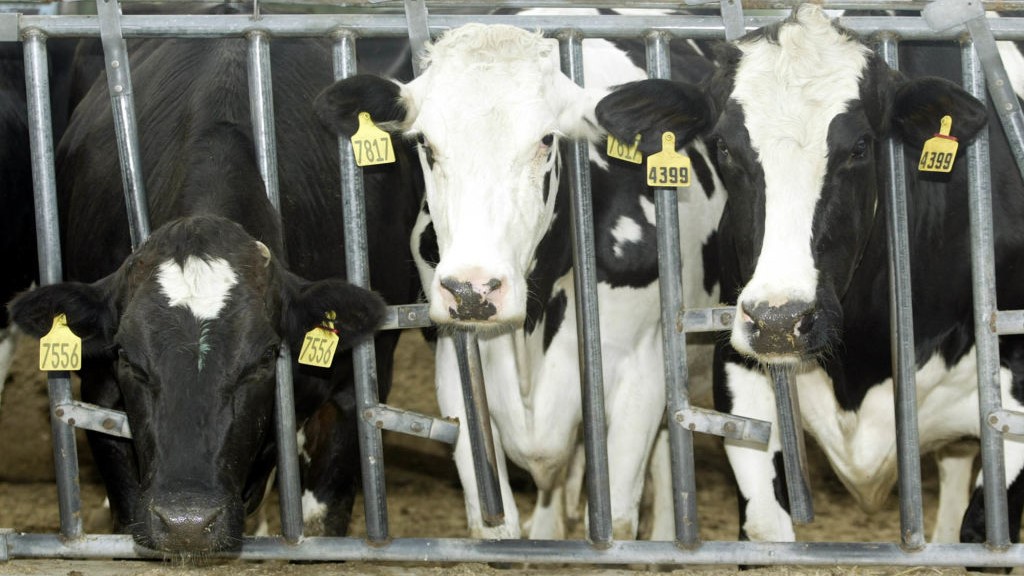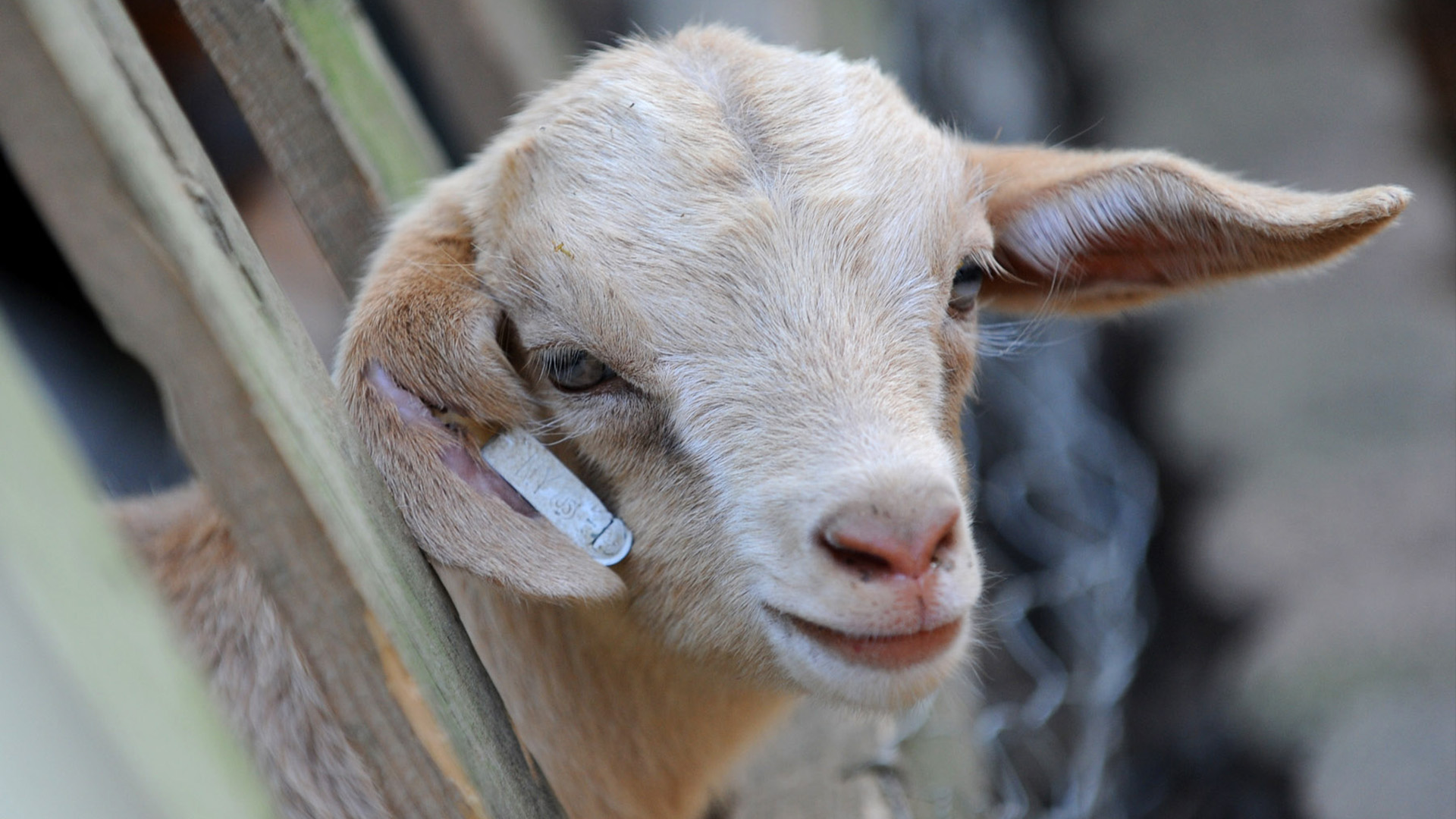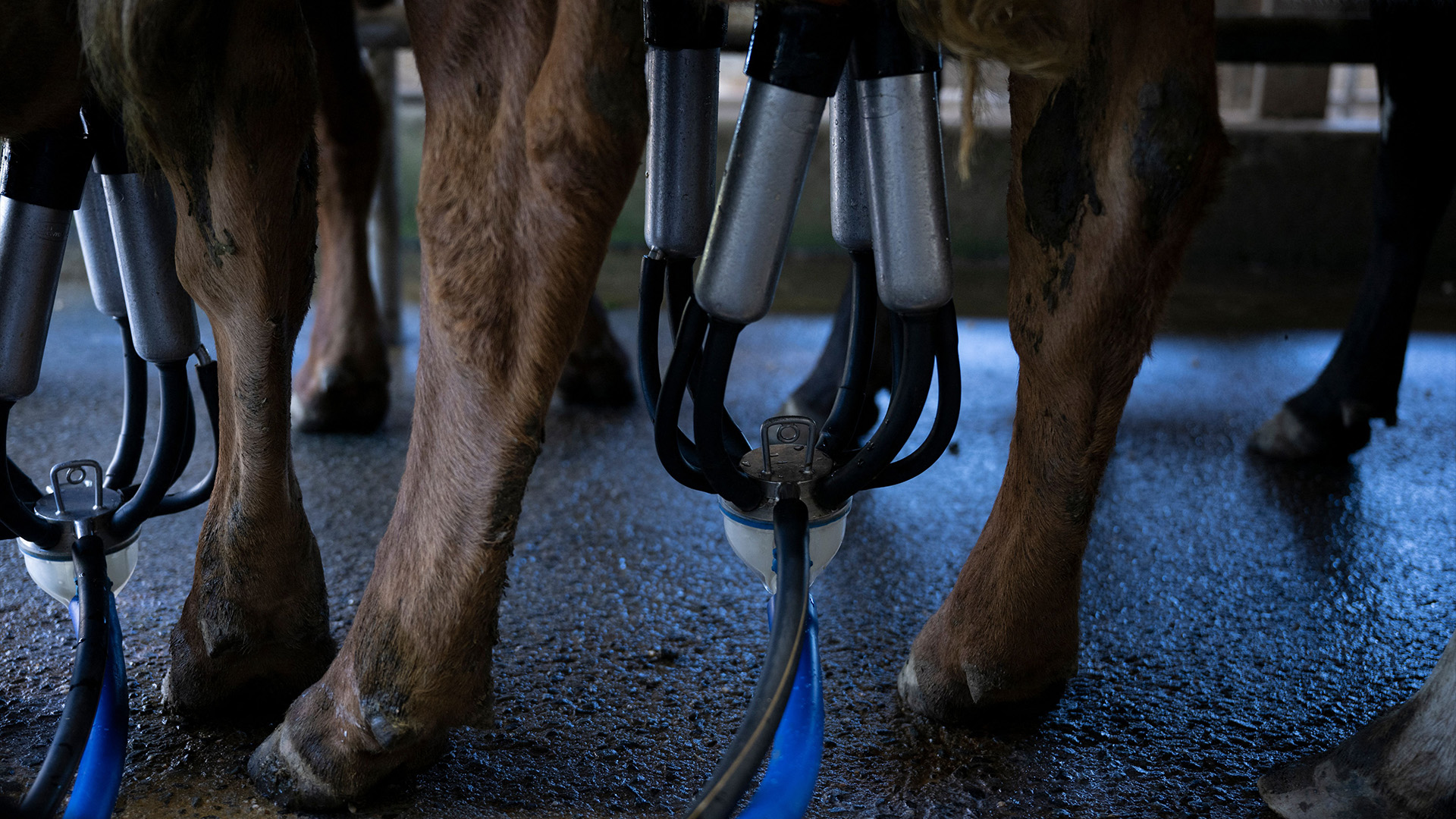
Editor's note: This is a developing story and will be updated.
A bird flu virus called H5N1 recently infected animals that it had never been seen in before: goats and cows. Now, it's suspected that four people have picked up the infection after being exposed to infected cows, or potentially their bodily fluids or bedding.
Here's what we know so far about these unusual cases of H5N1 in the U.S.
Related: 21-year-old student dies of H5N1 bird flu in Vietnam
What is H5N1 bird flu?
H5N1 is a subtype of avian influenza A, a broad group of related bird flu viruses. It's categorized as a form of "highly pathogenic" avian influenza, or HPAI, because it causes severe and fatal disease in poultry. For example, H5N1 and other "H5" bird flu viruses can rapidly cause organ damage in chickens and kill up to 90% to 100% of chickens they infect, often within 48 hours, according to the Centers for Disease Control and Prevention (CDC). H5N1 has been responsible for the major bird flu outbreaks seen on U.S. poultry farms and on farms in other countries since 2022.
Although HPAI viruses are known for devastating domestic bird populations, H5N1 also infects wild birds and occasionally infects various mammals, including people. In non-avian species, it can still cause fatal disease, but some cases are mild or asymptomatic.
H5N1 infections in mammals, in general, raise concern that the virus could evolve to infect humans more easily and perhaps spread widely between people, sparking a pandemic, according to the World Health Organization (WHO). But scientists haven't seen any changes in the virus that suggest that's happening at this point.
Which animals can H5N1 infect?
H5N1 most often infects domestic and wild birds, although some wild birds act as "reservoirs" for the virus, meaning they can carry and spread it without getting sick. These carriers include waterfowl, such as ducks, geese and swans; and shorebirds, such as plovers and sandpipers, the CDC says.
In the past 20 years or so, H5N1 has also been detected in at least 48 mammal species across 26 countries. These include foxes, bears, seals, sea lions and polar bears, as well as pet cats and dogs and farmed mink. The U.S. Department of Agriculture (USDA) maintains a map of where different mammals have been infected in the U.S.
This year, for the first time, H5N1 was detected in goats and cows. This marks the first time H5N1 has been found in ruminants, which include hooved, cud-chewing mammals like cows, goats and sheep.
The infections among goats were reported in mid-March on a Minnesota farm where ducks and chickens had previously tested positive for the virus. The first infections in cattle were reported a week later among dairy cows in Texas and Kansas, which also likely got the virus from birds.
Related: 'Novel' swine flu virus sickens Pennsylvania child in 1st case of the year

Where has H5N1 been detected in cows?
After being detected in cows in Texas and Kansas, H5N1 infections were also confirmed in cows in Idaho, Michigan and New Mexico, according to the USDA's Animal and Plant Health Inspection Service. As of June 14, the USDA has reported that 92 dairy cow herds in 12 U.S. states have confirmed cases of infection.
Early data suggest that the specific strain of H5N1 infecting cows matches one introduced to the U.S. by wild birds — known as clade 2.3.4.4b — back in 2021. Before that, the strain had spread mostly in Europe, Asia and Africa.
"[H5N1] could have been infecting dairy cattle a year ago. We just never thought about looking … for it," Dr. David Swayne, a bird flu expert who is now a private consultant after having worked for the USDA, told STAT. Experimental data published in 2008 suggested that at least one H5N1 strain can infect baby cows, so it's not totally unexpected to see the virus in cattle.
The recently infected cows have been reported to produce less milk, show poor appetite, develop cold-like symptoms and become lethargic. There have been no reported deaths among the cows.
Can H5N1 infect people, and how dangerous is it?
H5N1 can occasionally infect people and can lead to death, with about 50% to 60% of reported cases resulting in fatal disease. More than 880 human cases of H5N1 have been reported worldwide since the late 1990s, according to the CDC.
Most often, human H5N1 infections occur after a person had close or lengthy unprotected contact — without gloves, a face mask or eye protection — with infected birds or with objects contaminated with sick birds' saliva, mucus or poop. These cases have not been tied to sustained human-to-human spread of the virus, but there's been some evidence of very limited spread between people.
Although H5N1 infections can be fatal, some people show no symptoms or only mild symptoms. Mild symptoms might include eye infections, such as conjunctivitis (pink eye), and upper respiratory symptoms, like sneezing and coughing. Severe cases can lead to life-threatening pneumonia.
Bird flu can be treated with antiviral drugs used for seasonal flu. The CDC also has several candidate vaccines prepared for manufacturing, just in case this or a closely related virus were to suddenly spread between people; seasonal flu vaccines do not protect against H5N1.
There have been five human cases of H5N1 in the U.S. The first was in 2022, in a person in Colorado who'd had direct exposure to infected poultry. It's possible that this case wasn't a full-blown infection but rather remnants of the virus being detected in the person's nasal passages.
The second case was in April 2024, when a person in Texas caught the virus after likely being exposed to infected cows; this person's only reported symptom was pink eye. The third was reported in Michigan in May 2024, also in connection with infected cows on a farm. This third individual also only showed eye-related symptoms. The fourth case was reported later in May 2024, when a worker at a different Michigan dairy farm developed mild respiratory symptoms, including cough. The fifth was reported in July 2024, in a dairy worker in Colorado who developed only eye symptoms.
Related: 1st-known 'highly pathogenic' bird flu cases in Antarctic could threaten penguins

Should you worry about H5N1 in cows?
Finding H5N1 in cows is interesting to scientists because it hasn't been seen before, but as of now, it poses a low risk to the general public.
As for cows, there's some early hints that the virus can spread among cattle — the cows in Idaho reportedly became sick after being exposed to cows shipped from Texas, Science reported, and the Michigan cases were also thought to be tied to cows from Texas, the CDC reported. However, H5N1's ability to spread among cows still needs to be confirmed.
In regards to people, "initial testing has not found changes to the [H5N1] virus that would make it more transmissible to humans," the USDA noted in an April statement. "While cases among humans in direct contact with infected animals are possible, this indicates that the current risk to the public remains low."
The CDC also reported that there have been no changes to the virus that would make it less vulnerable to Food and Drug Administration (FDA)-approved antiviral drugs for the flu.
Nevertheless, the CDC recommends that people avoid sick or dead animal carcasses, including wild birds, poultry and cattle. They should also avoid raw milk, poop, litter or other materials contaminated by animals with suspected H5N1 infections, and they should avoid uncooked and undercooked food products from such animals.
Is the milk and beef supply safe?
The discovery of H5N1 in cows does not threaten the country's milk supply, the USDA noted. Dairies are required to send only milk from healthy animals into processing for human consumption, and the commercial milk supply is pasteurized before going to market, which kills viruses. Unpasteurized milk always carries a risk of causing dangerous infections, but the likelihood of H5N1 infection from raw milk is not yet known.
Related: H5N1 bird flu can remain infectious in raw milk for at least an hour, study finds
Since March 25, shortly after news of the cow infections came to light, weekly sales of raw milk have increased by as much as 21% compared with previous years. But experts have warned that consuming raw milk could expose individuals to dangerous pathogens, alongside increasing the likelihood of H5N1 gaining the necessary mutations to jump to and spread between humans.
Notably, there isn't yet enough evidence to know whether drinking raw milk contaminated with H5N1 could result in a human infection.
More information on milk safety given the current situation can be found on the FDA's website.
So far, H5N1 has been found in dairy cows, but the USDA also emphasized that the beef supply is safe and that cooking meat properly kills viruses.
Editor's note: This article was updated on July 5 to note an additional human case of H5N1. The original article was posted on April 4.
This article is for informational purposes only and is not meant to offer medical advice.
Ever wonder why some people build muscle more easily than others or why freckles come out in the sun? Send us your questions about how the human body works to community@livescience.com with the subject line "Health Desk Q," and you may see your question answered on the website!







